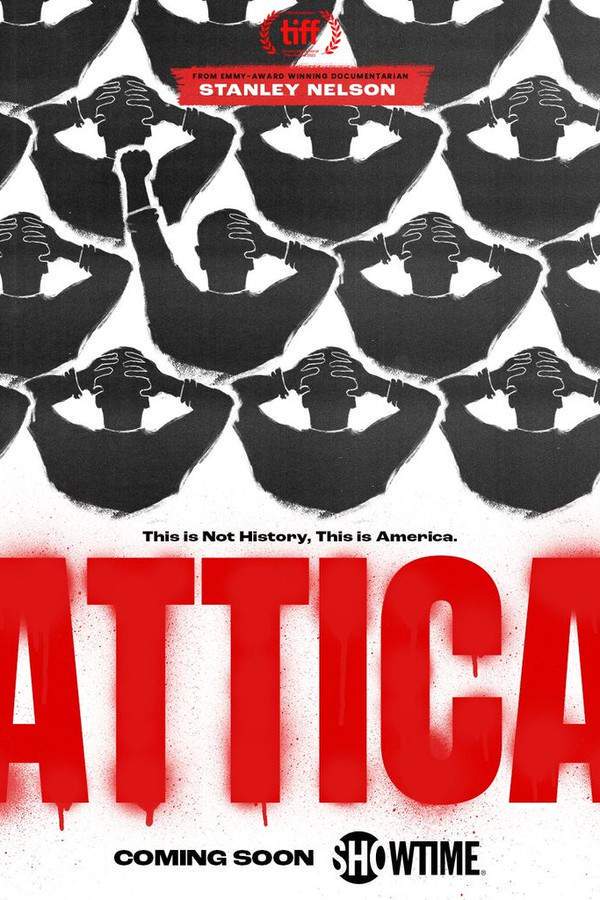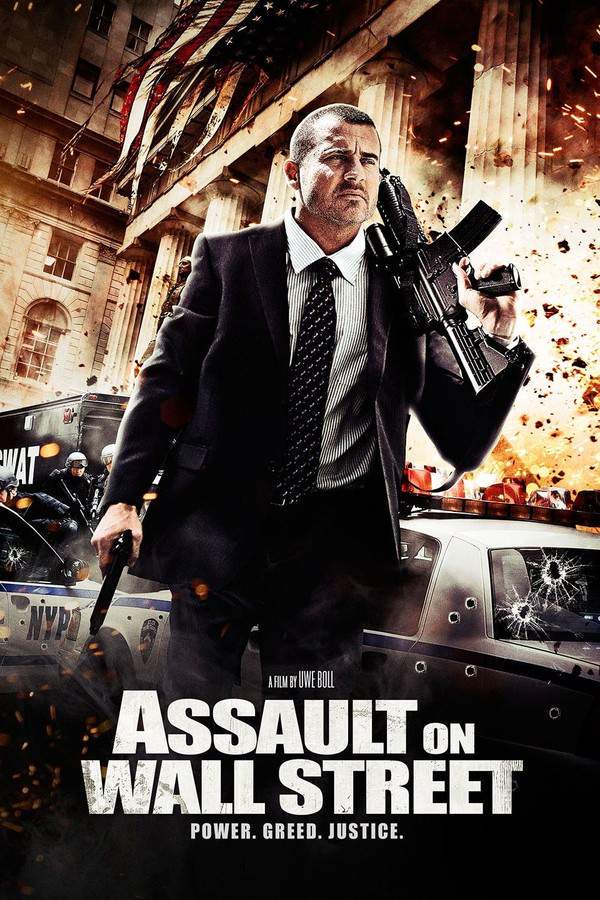
Against the Wall
Year: 1994
Runtime: 111 mins
Language: English
Director: John Frankenheimer
In 1971, a warden at Attica Penitentiary finds himself thrust into a violent hostage crisis after inmates seize control of the facility to demand humane living conditions. The confrontation ends in tragedy, with 39 men losing their lives, and the film chronicles the harrowing events that followed.
Warning: spoilers below!
Haven’t seen Against the Wall yet? This summary contains major spoilers. Bookmark the page, watch the movie, and come back for the full breakdown. If you're ready, scroll on and relive the story!
Against the Wall (1994) – Full Plot Summary & Ending Explained
Read the complete plot breakdown of Against the Wall (1994), including all key story events, major twists, and the ending explained in detail. Discover what really happened—and what it all means.
The docudrama offers a partially fictionalized, immersive look at the four-day Attica Prison riot of 1971, when inmates at the Attica Correctional Facility seized control of large parts of the prison to push for basic human rights and humane conditions. The narrative unfolds through a careful cross-cutting portrayal of two pivotal figures: rookie corrections officer Michael Smith and inmate Jamaal X, whose wary alliance becomes the emotional throughline of the story. Smith’s perspective is framed as the core lens—the film is largely anchored in his testimony and experiences after he is shot four times—while Jamaal X is drawn from a composite of inmates, including individuals who, in Smith’s account, helped save his life. This structure grounds the drama in personal stakes even as it surveys a broader social and political crisis.
From the opening montage, the film situates the riot within a tumultuous era: footage from late-1960s and early-1970s America—the assassinations, campus protests, and urban clashes—sets a charged mood. The quiet streets of Attica give way to the tense atmosphere inside the prison, where the camera lingers on the harsh realities of confinement: overcrowding, violent treatment by some corrections officers, humiliating searches, broken toilets, and the daily indignities that erode dignity. The atmosphere is thick with echoes of wider political upheaval, and the inmates’ demand for recognition of their rights is portrayed as a principled stand as much as a moment of existential danger.
Smith’s entrance into the penitentiary marks a conflict between his duty and his growing empathy for the inmates. He arrives as one of the younger officers who chooses to treat prisoners with a measure of respect, a stance that sets him at odds with more grizzled colleagues and supervisors who enforce control through intimidation. His evolving view is tested as he witnesses the system’s abuses first-hand, and his moral compass becomes a quiet counterpoint to the policing tactics on display. The film emphasizes the complexity of his role—caught between the pressures of adhering to orders and the pull of a more humane approach that could either endanger him or save lives.
Sharon Smith, Sharon Smith, is depicted as a stabilizing, morally clear voice from outside the cell block. Her reaction to her husband’s changing stance is a pivotal emotional beat: she challenges him, sensing that the pressures within the prison are reshaping him in ways he hadn’t anticipated. The moment she voices, “You’re changing,” underscores the personal cost of moral courage under pressure and acts as a spiritual counterpoint to the violence and fear roiling inside the facility.
Within the inmate ranks, the leadership and the strategies for resistance crystallize around figures like Jamaal X, whose influence helps galvanize a broader movement for rights. Jamaal X’s leadership is portrayed through his insistence on dignity and due process, even as he directs a confrontation that tests every guard’s resolve and the state’s willingness to negotiate. The film shows the political undercurrents among the prisoners, including the religious and ideological dimensions that shape their collective actions and the demands they present to the authorities.
Lieutenant Weisbad emerges as a representative of the seasoned, bureaucratic approach to crowd control—an officer who believes in maintaining order through hardline measures and procedural authority. His presence on screen highlights the tension between the impulse to contain and the impulse to dialogue, revealing how the clash between these impulses shapes the course of the crisis. The portrayal of Weisbad’s tactics, and the fallout from them, offers a stark look at how authority can become dehumanized in a pressure cooker situation.
The uprising intensifies as inmates seize control, overpower a subset of guards, and take hostages when a gate fails. It is in this volatile moment that Jamaal X and Smith forge a cautious, pragmatic alliance: one that rejects dehumanization even as it navigates life-threatening risk. Jamaal X recognizes in Smith a partner-soul in a system that has wronged both guards and prisoners alike, and the two men’s cooperation becomes essential to sustaining a line of communication with the outside world. The alliance is not romanticized; it is presented as a difficult, survival-driven partnership built on mutual respect and a shared sense of human dignity amid chaos.
A turning point arrives when Smith agrees to speak with a news crew, a decision that signals a move from passive endurance to public testimony. The film uses this moment to explore how media attention, moral credibility, and political leverage intersect in times of crisis. Smith’s hesitant but growing willingness to expose the truth—without compromising his own safety or the inmates’ welfare—becomes a crucial thread that connects the interior reality of the prison with the external expectations of the public and the state.
As negotiations unfold, the governing authorities in New York escalate from dialogue to decisive force. The film details a controversial fifth-day raid, where law enforcement and soldiers move into the compound, gas fills the corridors, and the hostages are caught in a deadly spray of chaos. The ensuing scenes emphasize the human cost of such a raid: several officers, including Weisbad, are killed, and both Jamaal X and Smith are wounded in the crossfire. The deaths and injuries mark a grim turning point that underscores the limits of coercive control and the price paid by those who inhabit these institutions.
The movie closes with a documentary-like epilogue that situates the Attica riot within a larger historical frame. It notes that the prison population in the United States had surged dramatically in the decades before and after Attica, signaling ongoing concerns about overcrowding, inmate rights, and the capacity of the justice system to address inhumane conditions. The concluding statistics highlight the lasting relevance of Attica, positioning the riot not only as a historical incident but as a touchstone for ongoing debates about incarceration, reform, and civil rights.
Throughout, the film uses a measured, human-centered lens to portray both the brutality of the system and the moments of humanity that emerge even in the worst circumstances. The relationship between Smith and Jamaal X serves as a quiet testament to the possibility of understanding across divides, while Sharon Smith’s grounded moral perspective keeps the audience anchored in the real-world consequences of the riot. The result is a nuanced portrayal that honors the complexity of a traumatic event and invites viewers to reflect on how a single decision to treat others with dignity can influence the course of a crisis—and perhaps the future of a nation’s approach to justice.
Last Updated: October 09, 2025 at 09:32
Unlock the Full Story of Against the Wall
Don't stop at just watching — explore Against the Wall in full detail. From the complete plot summary and scene-by-scene timeline to character breakdowns, thematic analysis, and a deep dive into the ending — every page helps you truly understand what Against the Wall is all about. Plus, discover what's next after the movie.
Against the Wall Timeline
Track the full timeline of Against the Wall with every major event arranged chronologically. Perfect for decoding non-linear storytelling, flashbacks, or parallel narratives with a clear scene-by-scene breakdown.

Similar Movies to Against the Wall
Discover movies like Against the Wall that share similar genres, themes, and storytelling elements. Whether you’re drawn to the atmosphere, character arcs, or plot structure, these curated recommendations will help you explore more films you’ll love.
Explore More About Movie Against the Wall
Against the Wall (1994) Scene-by-Scene Movie Timeline
Against the Wall (1994) Movie Characters, Themes & Settings
Against the Wall (1994) Spoiler-Free Summary & Key Flow
Movies Like Against the Wall – Similar Titles You’ll Enjoy
Attica (2021) Plot Summary & Ending Explained
Assault on Wall Street (2013) Plot Summary & Ending Explained
The Killing Yard (2001) Story Summary & Characters
The Wall Man (2007) Full Movie Breakdown
Attica (1980) Ending Explained & Film Insights
Beyond the Walls (1984) Complete Plot Breakdown
Against Their Will (1994) Movie Recap & Themes
Riot in Cell Block 11 (1954) Story Summary & Characters
Riot (1969) Plot Summary & Ending Explained
Revolt in the Big House (1958) Story Summary & Characters
Behind the High Wall (1956) Detailed Story Recap
High Wall (1947) Ending Explained & Film Insights
Inside the Walls of Folsom Prison (1951) Full Summary & Key Details
Cell 211 (2009) Complete Plot Breakdown
Over the Wall (1938) Spoiler-Packed Plot Recap

















